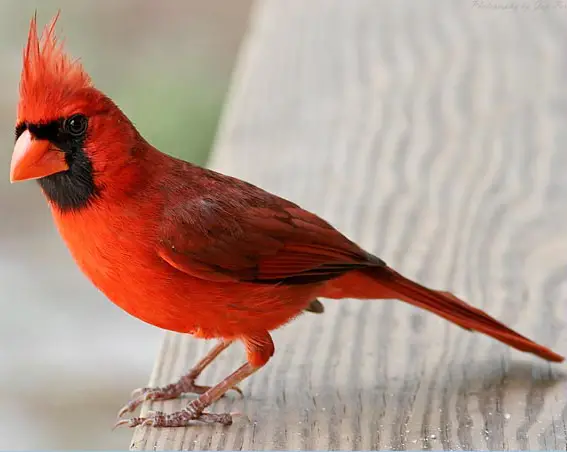A cardinal is one of the most striking songbirds. The male is a brilliant red that catches the eye in a neighborhood or in the woods. The female is less conspicuous, as she is mostly brown, but she still has red accents and a sharp crest. These birds are especially striking against snow, as they do not migrate south like some others.
Cardinals are fairly large for songbirds, with short thick bills and prominent crests. The bill is reddish and the face is black in both genders.
Cardinals often are seen in pairs. They sit low in trees and shrubs, and often are found at bird feeders. Even as they nest in dense shrubs, they sometimes can be detected by their loud, metallic chirps.
The female cardinal is one of only a few female songbirds who sing. She even does it sitting on the nest, which might offer her mate information about when to bring food. The pair also might share song phrases, but the female's song will be longer and slightly more complex.
Females do most of the actual nest building, although males might bring materials. The females crush twigs with their beaks, bend twigs around their bodies and push them into place with their feet. Nests are about 4 inches across and usually are used only once. They often are wedged into forks of branches in dense foliage.
The male cardinal fiercely defends its breeding territory from other males. When a male sees its reflection in glass surfaces, it frequently will spend hours fighting the imaginary intruder.
Seeds and fruit make up the bulk of the cardinal's diet. They enjoy many types of birdseed, but especially like black oil sunflower seed. They also eat some insects, including moths, butterflies, flies, cicadas, crickets, katydids, leafhoppers, centipedes, spiders and beetles.
Cardinals are fairly large for songbirds, with short thick bills and prominent crests. The bill is reddish and the face is black in both genders.
Cardinals often are seen in pairs. They sit low in trees and shrubs, and often are found at bird feeders. Even as they nest in dense shrubs, they sometimes can be detected by their loud, metallic chirps.
The female cardinal is one of only a few female songbirds who sing. She even does it sitting on the nest, which might offer her mate information about when to bring food. The pair also might share song phrases, but the female's song will be longer and slightly more complex.
Females do most of the actual nest building, although males might bring materials. The females crush twigs with their beaks, bend twigs around their bodies and push them into place with their feet. Nests are about 4 inches across and usually are used only once. They often are wedged into forks of branches in dense foliage.
The male cardinal fiercely defends its breeding territory from other males. When a male sees its reflection in glass surfaces, it frequently will spend hours fighting the imaginary intruder.
Seeds and fruit make up the bulk of the cardinal's diet. They enjoy many types of birdseed, but especially like black oil sunflower seed. They also eat some insects, including moths, butterflies, flies, cicadas, crickets, katydids, leafhoppers, centipedes, spiders and beetles.

